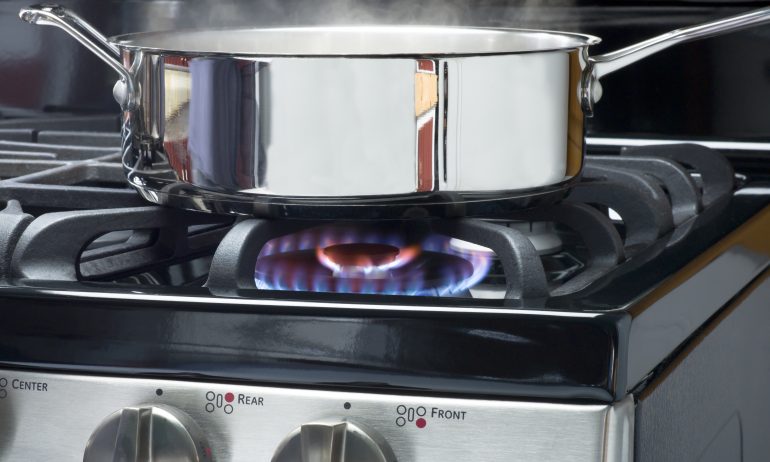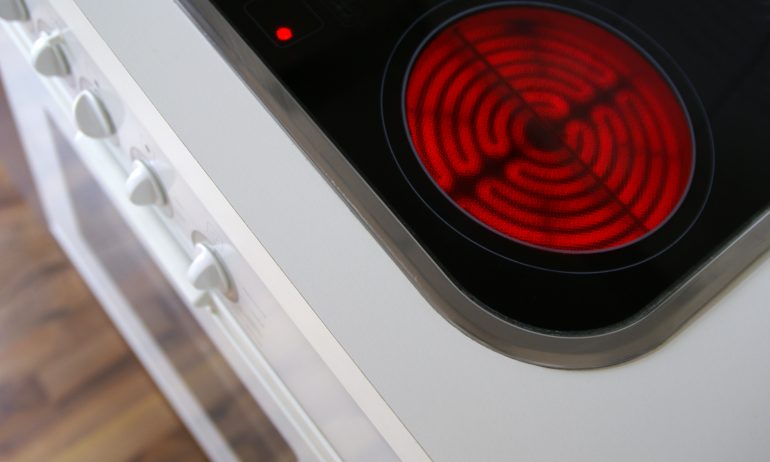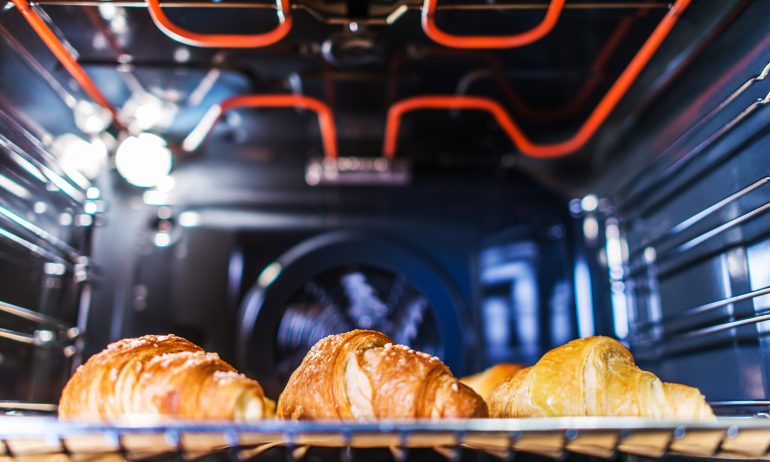It's a basic question you have to answer when you're in the market for a range: Are you going with gas or electric? The decision might come down to the type of power sources you already have at home — and whether you're willing to install new ones to make the switch.
About half of U.S. homes use natural gas to power their appliances, according to the U.S. Energy Information Administration. Gas ranges are often the preferred choice of home chefs, and many real estate agents use them as a selling feature when showing homes to prospective buyers. But electric ranges can also be both functional and elegant, sometimes coming with features you won't find on their gas counterparts. And a third option — a dual-fuel range — includes some of the best qualities of each kind.
Key differences
The differences between a gas range and an electric range start with how they are powered. Gas ranges are connected to a natural gas line or propane hookup, while electric ranges work by plugging them into a special electrical outlet that can handle the appliance's high energy demands.
Electric ranges are generally less expensive than their gas counterparts, according to the home services company HomeAdvisor. You can generally expect to pay $360 to $1,800 for an electric range, and $400 to $2,100 for a gas range, the company notes. But those costs can increase by hundreds of dollars if you're making a switch and need to install an electrical outlet or a gas hookup.
Ongoing energy costs vary by state, but in general, gas ranges cost less to run than electric ranges. Typically, though, the ongoing cost difference isn't significant enough to be a deciding factor.

Gas range: Why get it
Gas hookups exist, or you don't have the right electrical outlet
While electric ranges can be less expensive than gas ranges, switching can be pricey. That's because of the special electrical outlets they require. If you want to switch from a gas range to an electric range and don't have such an outlet available, you might need to hire an electrician to install one. That could add significantly to your costs, potentially making a gas range the cheaper option.
More temperature control at the stovetop
Professional chefs continue to sing the praises of cooking over an open flame. The most common reason is that foods cook quickly and evenly, which can be challenging with some electric models. With a gas range, you can control the stovetop temperature quickly by making the flame larger or smaller; with an electric range, it can take longer for the coils on the stovetop to heat up and cool down.
If precise temperature control is your top priority, consider another option: an induction range. Induction ranges require electrical power, not gas. But unlike electric ranges, they generate electromagnetic energy and can heat and cool more quickly and precisely than a gas stove. This option is costly, though; generally, induction ranges cost north of $1,500.
Relatively easy to clean
Removable cooking grates and ceramic caps make cleaning quick and easy. Grates can be wiped down, and gas burners with ceramic caps help keep spills out of the burner. While you can remove and scrub electric coils just as easily, glass or ceramic electric stovetops can be trickier. Food and grease stains can burn and be difficult to remove, and it's easy to scratch the smooth surface if you’re not using soft materials for cleaning.

Electric range: Why get it
Gas hookups are nonexistent
Since many homes don't have gas hookups, you might need to pay a professional to install one. Installing a new gas line can cost several hundred dollars, making an electric range a more economical option in terms of the initial investment.
Steady oven temperatures and smooth stovetop options
Just as electric stovetops heat and cool more slowly than gas stovetops, electric ovens also tend to heat and cool more slowly than their gas counterparts. That's a helpful feature if you're using your oven for baking and need well-regulated temperatures.
An electric range could also be a better choice if you want a range with a smooth glass or ceramic stovetop; gas ranges rarely come in this style. Electric ranges sometimes also come with adjustable heating elements to fit your pan or pot size or stovetop settings for keeping food warm after cooking.
Safety is a concern
Electric ranges are generally safer than gas ranges. A gas range that's not installed correctly can result in a gas leak, which could lead to a fire or explosion. And even a gas range that's properly installed can emit small amounts of carbon monoxide, a potentially deadly gas, which can build up to unsafe levels if the kitchen is poorly ventilated or you aren't using a range hood. To be sure, you can mitigate these risks; installing carbon monoxide detectors, for example, is a good idea. But with electric ranges, which don’t use gas, you might not have to worry about these potential hazards.

Dual-fuel range: A hybrid option
Combine the strengths of a gas cooktop with an electric oven, and you have a dual-fuel range. These hybrid ranges give you a gas stovetop with an electric oven, so you can change your stovetop temperatures quickly while keeping the oven at a steady temperature.
These models are more expensive. They cost an average of $2,000 more than gas and electric ranges, according to HomeAdvisor, and they require a gas hookup as well as an electrical outlet with the proper power rating.





